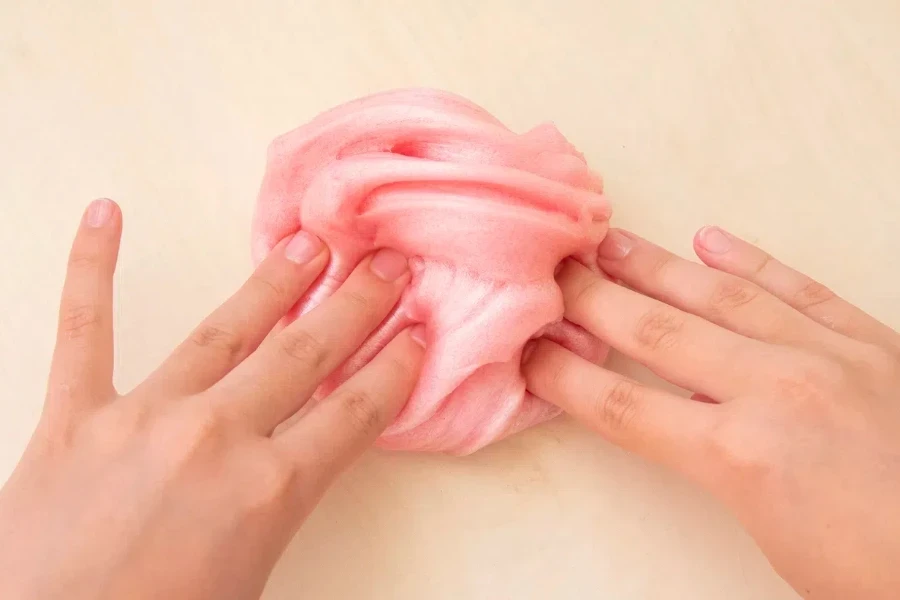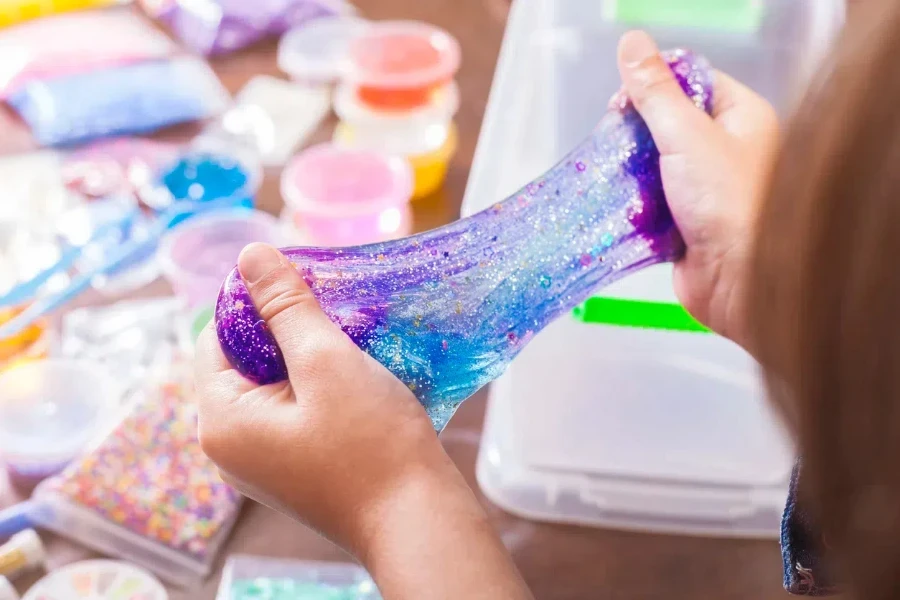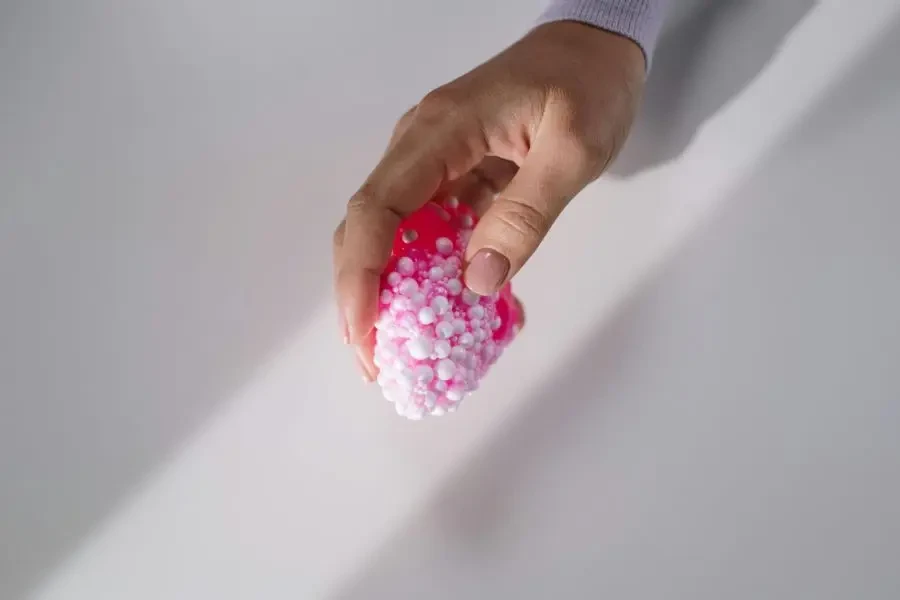Slime is a staple toy for many children around the world, but it can also be a source of many a headache for parents when it stains their children’s clothes.
Slime is a mixture of household ingredients, such as washable glue, borax powder, baking soda, contact solution, vegetable oil, corn starch, and food coloring, that are combined to make a polymer substance. That means that while it can be a nuisance to get out of fabric, it’s not impossible.
Read on to discover solutions for removing slime from clothes.
Table of Contents
The increasing popularity of slime
2 methods to get slime out of clothes
Conclusion
The increasing popularity of slime

The slime industry has seen a rapid rise in revenue in recent years thanks to the product’s ability to captivate both adults and children with its creative and tactile appeal.
What started as a simple playground pastime is now a multi-million dollar industry, with the global market ranging from basic DIY kits to premium, artisanal products, as well as eco-friendly, edible, glow-in-the-dark, glitter, and clear slime varieties, among many more.
Digital platforms, social media, and content have also played a massive role in helping to drive slime revenue by showcasing its various uses.
2 methods to get slime out of clothes
With this in mind, slime can also cause problems when it gets stuck on clothes or other fabrics. Not to worry though, as there are at least two methods to help clothes be slime-free once again:
1. Scrubbing with vinegar

The first method will require you to use either white distilled vinegar, rubbing alcohol, nail polish remover, or acetone. White vinegar, which is acidic and will help dissolve slime, is the most popular because it is readily available in the pantry.
Step 1: First, place the cloth item in the sink and wet the cloth slightly.
Step 2: Pour small amounts of white distilled vinegar onto the stain. Use enough vinegar to saturate the area and allow to soak for 5 minutes.
Step 3: Use a brush to scrub the vinegar,applying pressure so as to penetrate the slime, eventually breaking it down. Add more vinegar as necessary.
Step 4: Rinse the clothing with warm water and use your fingers to remove any remnants of slime while running water over the area. If there are any missed spots, repeat the vinegar and rinsing process again.
Step 5: If any slime residue remains, use dish soap on the affected spot. Then, rub the material together to work the soap into the stain. This step also helps to remove the vinegar odor.
Step 6: Finally, rinse the soap out or wash the clothing in a washing machine. Consider the care instructions on the label to wash the fabric effectively.
2. Washing in the laundry

When washing fabric stained with slime in the washer, make sure to follow these steps first, as doing so can cause the slime stain to spread to other areas or clothes.
Step 1: Scrape off the slime as much as possible. Be careful to avoid damaging or tearing the cloth.
Additionally, ice cubes can be used to first freeze smeared slime, helping to harden the slime before peeling it off. Alternatively, put the cloth in the freezer for a few minutes.
Step 2: Use a liquid laundry detergent. Pour a small amount of detergent into the slimed area. Massage the liquid detergent into the affected area by rubbing the fabric together, working the liquid detergent into the stained spot.
Step 3: Allow the liquid detergent to soak for 10 minutes. The detergent will help soften any remaining slime.
Step 4: Fill a pan or bucket with hot water and insert the fabric. The warmer the water, the more effective it will be to break up the slime. Stir the stained cloth to ensure complete saturation. Let soak for 30 minutes.
Step 5: Remove the cloth from the water and machine wash it. Follow the care instructions on the cloth label to clean it accordingly.
Step 6: Dry the cloth according to the care instructions. Some clothes are better tumble dried, while others should be air dried.
Finally, for truly tough stains, there’s always the dry cleaners!
Conclusion
Despite slime sometimes being hard to remove, there is always hope with just a little warm water, vinegar, soap, and patience. Now, you can enjoy playing with slime without worrying about potential stains.





 Afrikaans
Afrikaans አማርኛ
አማርኛ العربية
العربية বাংলা
বাংলা Nederlands
Nederlands English
English Français
Français Deutsch
Deutsch हिन्दी
हिन्दी Bahasa Indonesia
Bahasa Indonesia Italiano
Italiano 日本語
日本語 한국어
한국어 Bahasa Melayu
Bahasa Melayu മലയാളം
മലയാളം پښتو
پښتو فارسی
فارسی Polski
Polski Português
Português Русский
Русский Español
Español Kiswahili
Kiswahili ไทย
ไทย Türkçe
Türkçe اردو
اردو Tiếng Việt
Tiếng Việt isiXhosa
isiXhosa Zulu
Zulu